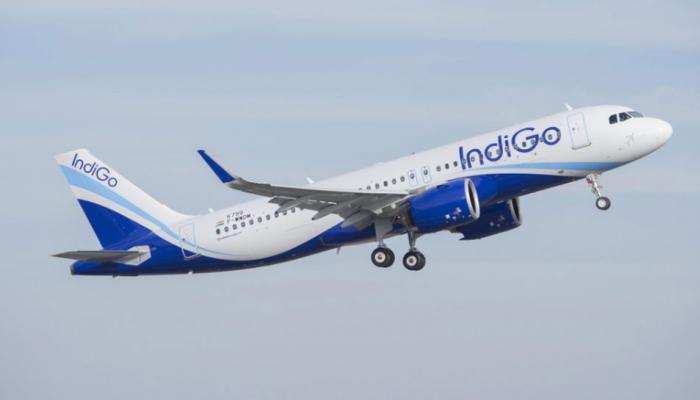2 IndiGo flights May Have Been Moments From Disaster
 NEW DELHI : Two IndiGo flights with 328 passengers onboard may have been moments away from a mid-air collision on Tuesday when the pilots on both aircraft took emergency evasive manoeuvers to avoid a disaster.
NEW DELHI : Two IndiGo flights with 328 passengers onboard may have been moments away from a mid-air collision on Tuesday when the pilots on both aircraft took emergency evasive manoeuvers to avoid a disaster.
The two IndiGo aircraft, both Airbus A-320s, were operating on the Coimbatore-Hyderabad (6E-779) and Bangalore-Cochin (6E-6505) routes respectively when in-cockpit alerts warned the pilots of an imminent collision between the airliners.
Sources indicate that the aircraft were vertically separated by just 200 feet as they headed towards each other. Travelling at several hundred kilometres per hour towards each other, the two aircraft were physically less than 8 kilometres away from each other when collision avoidance systems onboard were triggered.
The near-miss happened when 6E-779 was ordered by Air Traffic Control to climb to 36,000 feet and 6E-505 was asked to climb to 28,000 feet. At one stage of the flight, 6E-779 was at 27,300 feet and 6E-6505 was at just 27,500 feet with both aircraft headed towards each other.
According to IndiGo, ”The TCAS-Resolution Advisory system was triggered on two of our aircraft.”The airline has since informed the Directorate General of Civil Aviation, the aviation watchdog, of the near-miss.
IndiGo has not responded to queries from NDTV on the circumstances which resulted in the TCAS alerts being generated. The airline has also declined to share details on how close the aircraft were to each other. The Aircraft Accident Investigation Board (AAIB) has begun an investigation.
The TCAS, is used onboard airliners as the last defence against mid-air collisions. When the system generates a Resolution Advisory, as was the case on this occasion, a loud automated voice gives the pilots urgent instructions on what to do immediately. These voice commands can be ”Climb, climb,” ”descend, descend,” ”increase climb,” ”increase descent,” ”level off” among others.
All civilian airliners operating in India are required to operate TCAS systems which scan the airspace around the aircraft through a transponder which detects signals from other aircraft which use compatible systems.
A TCAS alert is sounded based on the rate which the aircraft in conflict are approaching one another in addition to several other variables calculated by the system. TCAS works in a coordinated manner, so instructions given to two aircraft which are headed towards each other are usually diametrically opposite. As an example, if pilots in one aircraft are ordered to climb, pilots in the other aircraft would be told to descend.
In similar incidents, two aircraft came face-to-face after landing at different runways of the Indira Gandhi International (IGI) airport in January. In December 2016, a major accident was averted at IGI airport after two planes, an IndiGo and a SpiceJet aircraft, faced each other on the runway.ndtv.

